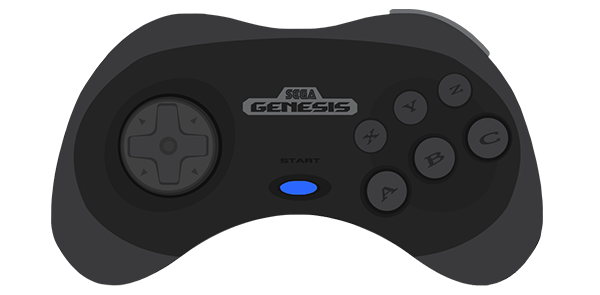Discovering Sonic 1: Bouncy Edition on PC - A Retro Dive
Remember the thrill of Sonic the Hedgehog's speed? While most of us associate those early adventures with the SEGA Genesis, there was a whole world of unofficial ports and fan creations popping up on PCs back in the day. One intriguing curiosity that sometimes surfaces in retro discussions is Sonic 1: Bouncy Edition. It's a name that sparks questions: What exactly is this version, and why "Bouncy"? Let's take a trip back to the era of DOS and explore this unique take on a classic.
What is Sonic 1: Bouncy Edition?
Unlike the official releases on consoles, Sonic 1: Bouncy Edition appears to be one of the many fan-made or unofficial PC ports of the original Sonic the Hedgehog game that circulated in the early to mid-90s PC scene. This wasn't a commercial release you'd find in stores next to your copies of Doom or Warcraft. Instead, these were often shared via bulletin board systems (BBS), floppy disks, or early internet file transfers.
These PC ports varied wildly in quality, accuracy, and features. Some were impressive technical feats for the time, while others were quirky, glitchy, or had strange physics – perhaps giving rise to a name like "Bouncy Edition." It represents a fascinating, often overlooked part of retro gaming history: the passionate, sometimes amateur, world of PC ports and fan projects that kept console characters alive on different platforms.
Why Play Sonic on PC?
For many retro gamers, the idea of playing classic Sonic on a PC rather than a SEGA console might seem odd. But for those who grew up primarily with DOS machines, these ports were sometimes the only way to experience iconic characters like the Blue Blur without owning the original hardware.
Playing these old PC versions, including potentially Sonic 1: Bouncy Edition, offers a different kind of nostalgia. It brings back memories of tinkering with CONFIG.SYS and AUTOEXEC.BAT files, wrestling with sound card drivers, and discovering hidden gems shared within the PC community. It's a reminder of a time when gaming wasn't always plug-and-play, and the effort to get a game running was part of the adventure.
Getting Started: How to Potentially Play
Finding and playing Sonic 1: Bouncy Edition today requires a bit of retro detective work, much like it did back then!
- Finding the Game Files: Since this wasn't a commercial release, you're unlikely to find it on platforms like GOG. The most probable place to locate the game files would be digital archives dedicated to preserving old PC software, like Archive.org. Searching these sites for "Sonic 1 Bouncy Edition" or similar terms might yield results.
- Running on Modern Systems: As a likely DOS-era game, it won't run natively on modern Windows, macOS, or Linux. You'll need an emulator. The go-to solution for DOS games is DOSBox.
- Download and install DOSBox.
- Mount the directory where you've placed the game files.
- Navigate to the game's directory within DOSBox and run the executable file (likely a
.EXEor.COMfile).
- Controls: Based on available information about this specific port, the controls are mapped to the keyboard, typical for DOS games:
- Movement: Arrow Keys
- Jump/Action (A Button): A key
- Action (B Button): S key
- Rapid A: Q key
- Rapid B: W key
- Start: Enter key
- Select: Spacebar
Getting it running might take a little trial and error with DOSBox settings, but that's part of the authentic retro PC experience!
The "Bouncy" Difference?
What makes this version "Bouncy"? Without a definitive source, it's open to interpretation. It could refer to:
- Physics: Perhaps the jumping or collision detection feels different, leading to a more "bouncy" feel than the Genesis original.
- Graphics/Animation: Maybe certain animations or sprites have a unique, perhaps less smooth, quality.
- Bugs/Glitches: It's also possible the name simply refers to unintended behavior or glitches that make the game feel unpredictable or "bouncy."
Exploring the game itself is the best way to discover the truth behind the name and see how it compares to the iconic SEGA version you know and love.
Reliving the Speed
Despite its potentially unofficial nature and the hurdles of getting it running, exploring Sonic 1: Bouncy Edition is a neat way to appreciate the history of PC gaming and the early days of fan-made content. It offers a different lens through which to view a timeless classic, reminding us that the passion for gaming transcends platforms and official releases. If you're a retro PC enthusiast or a die-hard Sonic fan looking for something truly off the beaten path, this "Bouncy Edition" is a fascinating piece of digital history worth seeking out.
FAQ
Q: Is Sonic 1: Bouncy Edition an official SEGA release? A: No, it is widely considered an unofficial fan-made PC port from the DOS era.
Q: Where can I find the game files? A: Digital archives dedicated to preserving old PC software, such as Archive.org, are the most likely places to find the game files.
Q: How do I run it on a modern computer? A: You will need a DOS emulator like DOSBox to run this old PC game on modern operating systems.
Q: Are the controls the same as the Genesis version? A: The controls are mapped to the keyboard, as was common for DOS games, using keys like Arrow Keys, A, S, Q, W, Enter, and Spacebar.


